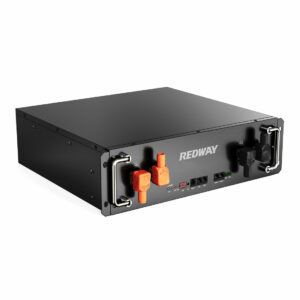Do power banks count as batteries?
Power banks are portable charging devices containing integrated battery cells (typically lithium-ion or lithium-polymer) managed by internal circuitry. While they store and deliver energy like standalone batteries, power banks include additional components like voltage regulators, USB ports, and charge controllers, making them hybrid systems rather than simple batteries. Their primary function is energy storage and on-demand delivery for smartphones, tablets, and low-power gadgets.
What technically classifies a power bank as a battery system?

A power bank qualifies as a battery-powered system due to its core lithium-based cells storing DC energy. However, unlike raw batteries, they incorporate PCB safeguards, multi-step charging (CC-CV), and output voltage regulation (5V/9V/12V). For example, a 20,000mAh power bank converts 3.7V cell voltage to 5V USB output, losing ~30% efficiency. Pro Tip: Prioritize power banks with GaN (gallium nitride) circuitry—they minimize heat and maximize energy transfer.
Beyond basic energy storage, power banks integrate protection circuits preventing overcharge, over-discharge, and overcurrent. Their battery management systems (BMS) balance cell voltages during charging, which standalone USB cables or chargers lack. But why does this matter? Without these features, unstable voltage could fry connected devices. For instance, Anker’s PowerCore series uses MultiProtect tech to adjust output dynamically, ensuring safe charging across devices.
| Feature | Power Bank | Standalone Battery |
|---|---|---|
| Voltage Regulation | Yes (5V/9V/12V) | No (Direct cell output) |
| Safety Circuits | Integrated PCB | External BMS required |
| Use Case | Device charging | Raw energy storage |
How do power banks differ from traditional rechargeable batteries?
While both store energy, power banks add voltage conversion, device compatibility, and safety layers. Traditional batteries (e.g., AA NiMH) output native voltage (1.2V) without regulation. Power banks, however, step up/down voltage using DC-DC converters. Practically speaking, trying to charge a phone directly with a 3.7V Li-ion cell would fail—it needs 5V USB. Pro Tip: For emergencies, use a 9V battery and boost converter—but expect <50% efficiency versus 85% in quality power banks.
Another key difference lies in energy density. A standard 18650 Li-ion cell offers ~2,500mAh at 3.7V (9.25Wh), while a 20,000mAh power bank delivers 74Wh (after 3.7V→5V conversion). However, due to conversion losses, only ~14,800mAh (5V) is usable. Ever wondered why manufacturers list both cell and output capacities? Marketing tactics often emphasize the higher cell mAh, obscuring real-world performance.
What battery chemistries do power banks use?
Most power banks use lithium-ion (Li-ion) or lithium-polymer (LiPo) cells. Li-ion offers higher energy density (200-265Wh/kg), while LiPo allows flexible shapes and slightly better thermal stability. For example, Xiaomi’s 20000mAh Power Bank 3 uses LiPo pouches, reducing bulk by 15% versus cylindrical Li-ion cells. Pro Tip: Avoid power banks with unspecified chemistries—they may use risky LiCoO₂ cells prone to overheating.
| Chemistry | Energy Density | Lifespan |
|---|---|---|
| Li-ion | 250Wh/kg | 300-500 cycles |
| LiPo | 220Wh/kg | 400-600 cycles |
Newer models are adopting solid-state batteries and graphene hybrids, but these remain niche due to cost. Meanwhile, budget power banks sometimes use recycled cells—a red flag. How can you spot them? Inconsistent weight, mismatched branding, or capacity claims exceeding 30,000mAh in palm-sized units often indicate scams.
Are power banks subject to battery safety regulations?
Yes, power banks must comply with UN38.3 (air transport), FCC (EMI), and IEC 62133 (safety) standards. Airlines restrict units >100Wh (≈27,000mAh) due to fire risks. For instance, a 26800mAh power bank at 3.7V equals 99.16Wh—just under the limit. Pro Tip: Print a label showing your power bank’s Wh rating (mAh × voltage ÷ 1000) to simplify airport checks.
Manufacturers also implement multi-protection circuits to prevent overvoltage, reverse polarity, and short circuits. Brands like RAVPower use temperature sensors and flame-retardant casings. But what happens if a power bank fails? In 2023, a Delta flight diverted due to a smoking power bank—underscoring why aviation rules exist.
RackBattery Expert Insight
FAQs
Do power banks lose charge when unused?
Yes, all lithium batteries self-discharge 2-5% monthly. Store power banks at 50% charge in cool, dry conditions to slow degradation.
Can I replace AA batteries with a power bank?
Only via USB adapters (e.g., AA-shaped 1.5V converters). Direct replacement isn’t possible due to voltage differences.



